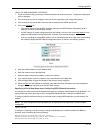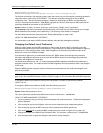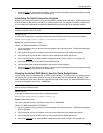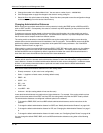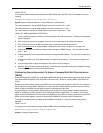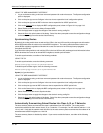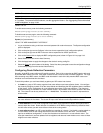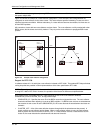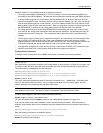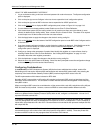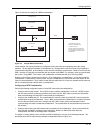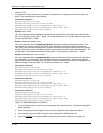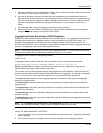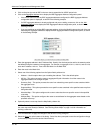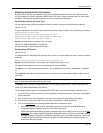
Configuring BGP4
Software release 07.1.10 and higher handles the attributes as follows:
• The routing switch adds the attributes only if it is a route reflector, and only when advertising IBGP route
information to other IBGP neighbors. The attributes are not used when communicating with EBGP neighbors.
• A routing switch configured as a route reflector sets the ORIGINATOR_ID attribute to the router ID of the
router that originated the route. Moreover, the route reflector sets the attribute only if this is the first time the
route is being reflected (sent by a route reflector). In previous software releases, the route reflector set the
attribute to the router ID of the route reflector itself. When a routing switch receives a route that already has
the ORIGINATOR_ID attribute set, the routing switch does not change the value of the attribute.
• If a routing switch receives a route whose ORIGINATOR_ID attribute has the value of the routing switch’s
own router ID, the routing switch discards the route and does not advertise it. By discarding the route, the
routing switch prevents a routing loop. The routing switch did not discard the route in previous software
releases.
• The first time a route is reflected by a routing switch configured as a route reflector, the route reflector adds
the CLUSTER_LIST attribute to the route. Other route reflectors who receive the route from an IBGP
neighbor add their cluster IDs to the front of the route’s CLUSTER_LIST. If the route reflector does not have
a cluster ID configured, the routing switch adds its router ID to the front of the CLUSTER_LIST.
• If routing switch configured as a route reflector receives a route whose CLUSTER_LIST contains the route
reflector’s own cluster ID, the route reflector discards the route and does not forward it.
Configuration Procedures
To configure an HP routing switch to be a BGP4 route reflector, use either of the following methods.
NOTE: All configuration for route reflection takes place on the route reflectors, not on the clients.
USING THE CLI
Enter the following commands to configure an HP routing switch as route reflector 1 in Figure 10.3 on page 10-34.
To configure route reflector 2, enter the same commands on the HP routing switch that will be route reflector 2.
The clients require no configuration for route reflection.
HP9300(config-bgp-router)# cluster-id 1
HP9300(config-bgp-router)# neighbor 10.0.1.0 route-reflector-client
HP9300(config-bgp-router)# neighbor 10.0.2.0 route-reflector-client
Syntax: cluster-id <num>
The <num> parameter specifies the cluster ID and can be a number from 1 – 4294967295. The default is the
router ID, expressed as a 32-bit number. You can configure one cluster ID on the routing switch. All route-
reflector clients for the routing switch are members of the cluster.
NOTE: If the cluster contains more than one route reflector, you need to configure the same cluster ID on all the
route reflectors in the cluster. The cluster ID helps route reflectors avoid loops within the cluster.
To add an IBGP neighbor to the cluster, enter the following command:
Syntax: neighbor <ip-addr> route-reflector-client
For more information abut the neighbor command, see “Adding BGP4 Neighbors” on page 10-14.
If you need to disable route reflection between clients, enter the following command. When the feature is
disabled, route reflection does not occur between clients but reflection does still occur between clients and non-
clients.
HP9300(config-bgp-router)# no client-to-client-reflection
Enter the following command to re-enable the feature:
HP9300(config-bgp-router)# client-to-client-reflection
Syntax: [no] client-to-client-reflection
10 - 35



